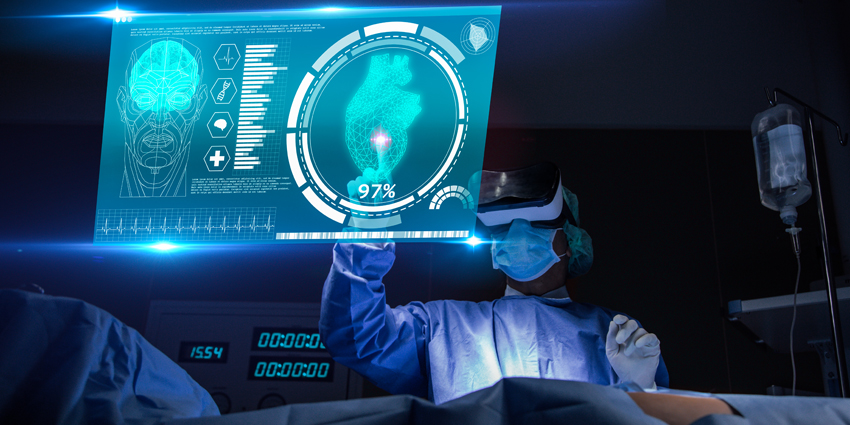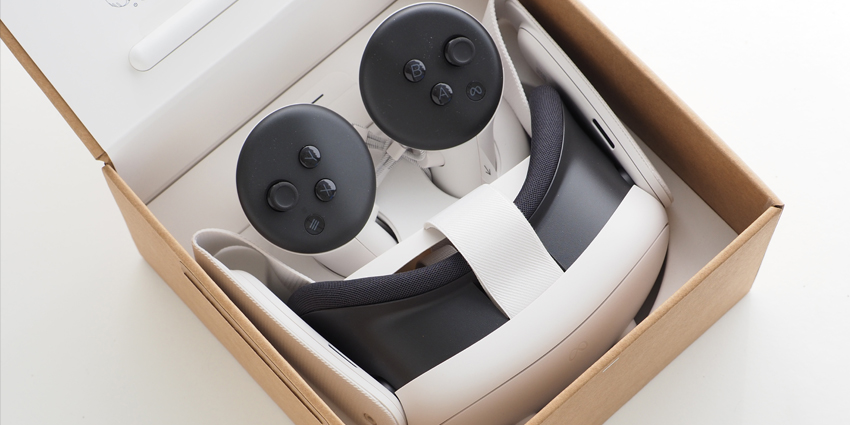Virtual reality is rapidly gaining attention in all parts of the business world. Companies are rapidly discovering that virtual reality isn’t just for games and entertainment, but also for collaboration, innovation, and training too. The VR market is therefore estimated to reach a value of around $184.66 billion by 2026, with a CAGR of 33.85 percent.
Clearly, demand for virtual experiences is growing everywhere, but some industries stand to benefit more from VR than others. For instance, the healthcare industry is rapidly turning to virtual reality to assist with all manner of patient care efforts, training, and more.
Today, we’re going to be looking at some of the top use cases for VR in healthcare, to help you discover the tech’s true potential.
1. Immersive Education
In various verticals, the potential for VR in education has been one of the most exciting concepts behind the technology. With VR for education, medical students can experiment with a range of different situations, without putting themselves or others in danger. Many experts believe medical students will soon no longer need to work on cadavers theoretical purposes.
Virtual reality medical training enables clinicians to take virtual journeys into the human body. Students can learn how to interact with medical instruments risk-free and improve their skills and motor functions as a result.
Companies like HumanSim are already demonstrating the options here, providing various solutions for VR medical training, which helps individuals to gain the skills required to work with different tasks and processes.
2. Better Surgery
The potential of medical virtual reality is perhaps most widespread in surgery. As mentioned above, VR solutions can be used to help train surgeons to complete complex procedures.
However, they’ll also be able to practice on improving their accuracy and motor skills, which reduces the risk of errors and post-operative complications.
Medical virtual reality in the surgical landscape could even pave the way towards a future where medical professionals can use robotics to assist with more delicate surgeries. AI-enhanced bots can be controlled and managed by surgeons from a distance using VR.
VR also assists with surgical planning, giving professionals a 3D “digital twin” of the body they’re going to be working on. This will allow physicians to study medical cases from a range of perspectives and find the best way to operate accordingly.
AR/VR platforms like Proximie can allow surgeons to scan bodies in real-time and identify problems before surgery.
3. Patient Interactions
Patient interactions have already evolved pretty significantly over the last couple of years. Concepts like telemedicine and remote care are becoming more common in an environment where face-to-face interactions might not be safe.
What’s more, lack of specialist access and long appointment waiting times have caused significant problems in the past with patients getting the right level of care.
VR could potentially eliminate this problem. Through holomedicine and telemedicine, care providers can deliver virtual consultations at almost any time and provide patients with access to useful information.
Rather than just telling a patient how they can best assist their recovery, doctors in a VR landscape can also show them how to do things, like rehabilitation exercises.
Similarly, patients in the VR world can more accurately highlight the areas where they’re feeling pain and share useful insights which could make diagnoses easier and faster.
4. Battling Memory and Motor Skill Disorders
As professionals continue to experiment with the possibilities of VR in healthcare, we’re beginning to learn how the right tools can improve both physical and cognitive health.
From a cognitive perspective, VR is rapidly emerging as a solution to help protect and strengthen memory in people with Alzheimer’s disease and dementia.
Projects like the “WayBack” solution offer a drug-free opportunity for people to rediscover precious feelings and memories, to re-establish communication with loved ones. Medical virtual reality testing simulations may even make it easier to determine when a person is at risk at Alzheimer’s.
Aside from improving memory for emotional and mental health purposes, VR can also assist with improving cognitive focus for motor skill disorders.
Research into motor skill disorder treatment with VR shows how capable virtual reality devices can sometimes be. Through VR, patients can experiment with motor functions, and train their muscle memory.
5. Mental Health Treatment
Another area of health currently being addressed by the VR landscape in healthcare, is mental health. Using virtual reality medical training strategies in a safe, controlled, and patient-focused environment can help all kinds of patients to deal with issues of stress and fear.
There are even programs like “Virtually Better” which promise to assist with curing addiction to tobacco, alcohol, drugs, and other unhealthy behaviours.
Virtual reality can also assist with a range of other mental health disorders and conditions, like paranoia, or depression. There’s been a significant rise in the diagnosis of mental health conditions in the last couple of years. With the help of virtual reality, it’s possible to address this concern, providing a high-quality of therapy and guidance for those with specific issues.
Mental health treatment options via VR could also help individuals suffering from conditions like agoraphobia, where it’s difficult to get out of the house.
6. Improved Collaboration
Sometimes, curing diseases, coming up with healthcare strategies, and helping the public at large requires more than just one medical professional.
There are many aspects of the healthcare landscape which require professionals to share knowledge and insights in a flexible environment. Virtual Reality can be the perfect tool for this.
With Virtual Reality, teams can work together on planning intricate surgeries pertaining to vital organs or explore potential solutions to complex diseases. One company in 2020 even used VR to explore the details of the COVID virus to help come up with a cure.
Just like in any industry, VR can allow people to share thoughts and unique environments like never before. Used correctly, this technology could help bring the brightest minds in the world together to achieve phenomenal things.







